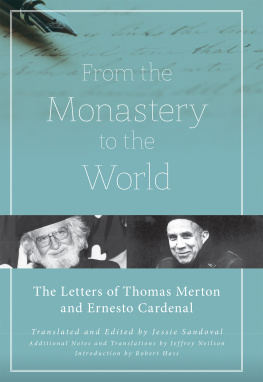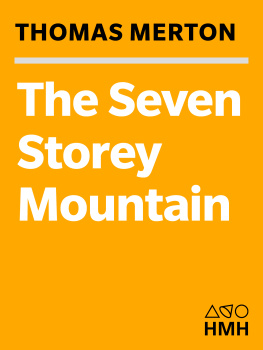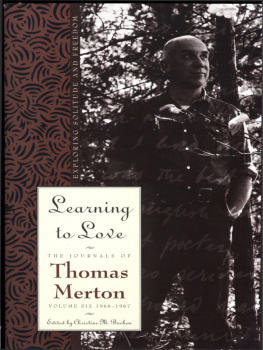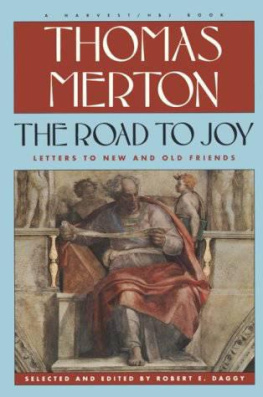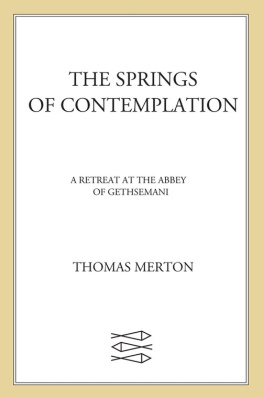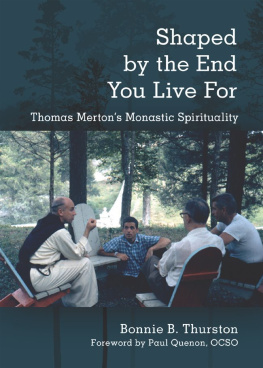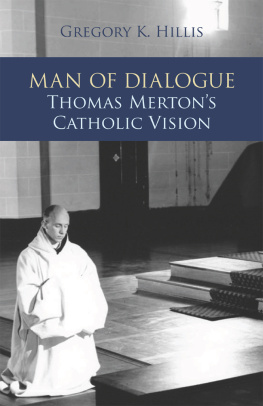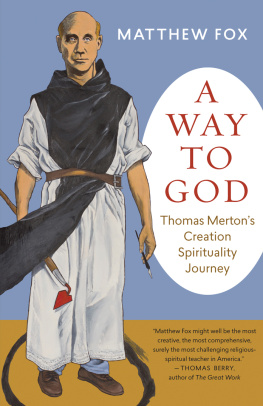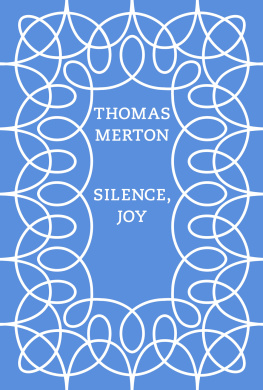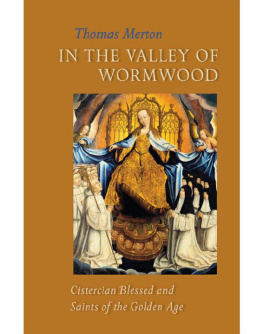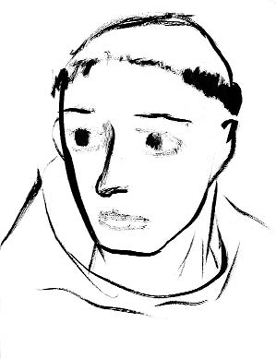Thomas Mertons Dialogues with Silence
The only unhappiness, Thomas Merton wrote, is not to love God. If this standard for his joy is accurate, if what he wrote in his private journal is true, then the book you hold in your hands bears the signature in prayers and drawings of a deeply happy human being.
In defining monks, Saint Benedict, the father of Western monasticism, wrote simply that they truly seek God. By this criterion, Thomas Merton was probably formed a monk in his mothers womb.
He was born of artistsa New Zealander and an American who found each other in a painters studio in Paris. Retreating from the First World War and finding sanctuary in Prades, France, Owen sired, Ruth Jenkins bore, and both nourished a son who would become in time a world-celebrated monk and writer.
He came into the world, like everyone else, captive to a tainted ancestry of human selfishness, greed, and violence that would inexorably graft itself unto his own heart. By a committed life of prayer and work he would learn the right means to root out the thicket of Western cultures materialism lodged within him. He would rediscover for himself and for others reading over his shoulder a traditional road toward selflessness, generosity, and nonviolence. By his vocation to become a monk and writer, Merton would become another witness for his generation of the way out of self-defeating individualism by tracking anew the boundaries of that ancient other country whose citizens recognize a hidden ground of unity and love among all living beings.
Merton possessed a critical mind and a poets passion. He wantonly loved books, women, ideas, art, jazz, hard drink, cigarettes, argument, and having his opinions heard. He nevertheless chose at the age of twenty-three to be baptized a Roman Catholic; then, going further at the age of twenty-six, he chose to becometo the consternation of his friendsa Trappist monk.
He had exhibited compulsions that should have made him a literary precursor to the beat generation. Merton should have evolved into a wild man always high on a drug of choice, perpetually on the road, and writing in rebellion against the society of squares and gray suits. He enclosed himself instead in a forest monastery in the middle of America. Once a happy denizen of Manhattan, he placed himself in a subsistence farming community marked by frugal stability and routine, by a life of prayer, silence, and anonymity from the worlds one thousand and one interesting things. By becoming a monk, Merton ensured that his rebellion against the world and the madness it had induced in him would go deeper than any literary pose.
On December 10, 1941, under a canopy of cold stars, Merton arrived in rural Kentucky at the Abbey of Gethsemani and immediately loved its walls. When the gatehouse door shut behind him, he abandoned his disordered youth and wedged himself into narrow borders so as to find out who he might more authentically become before he died.
Once taking up his inner journey at Gethsemani, he would never waiver for long from its hard path. He participated by writing in the political, ideological, and social storms attending three decades from the 1940s to the 1960s. He traveled through these and his own personal storms clinging until the very end to the solid mast of an ancient monastic path.
Mertons stability at Gethsemani for twenty-seven years was hard therapy for the wanderlust he had inherited from his father. Yet his monastic stability would become the great blessing for his writing, his teaching and his art. Staying in one place, he was able to delve ever more deeply by reflection and prayer into the meaning of his unfolding life in the unfolding history of his times. Mertons stability honed his art of confession and witness in poetry, journals, letters, and books on a wide range of interests. By intimately exploring a monks spare geography, Merton discovered the riches awaiting the tireless cartographer of its limitations.
He passed over to the true geography of his heart not by crossing seas and seeking out new cities but by sinking roots in one Kentucky place with a community of fellow travelers. Rooting his mind at Gethsemani, he paradoxically experienced the wider horizons of his times. Mertons stability at Gethsemani, through the thick and the thin of his passionate struggle for a better way to be a human being, is a major key to his appeal to a generation that risked, as he himself had risked, traveling down a road of rootless dissipation.
Thomas Merton remained a monk for twenty-seven years because he could never stop loving becoming a monk. In spite of decades of monastic routine (or indeed precisely because of it), he could muster a poets concentrated joy for the smallest turns of difference in time or temperature that marked a day as singular and new. Mertons joyoften muffled below the voicing of his public cares and concernssituated him among those rare human beings who love the life they are leading and who have found their own true place. He reflects his typical joy as a monk in this journal entry dated May 21, 1963:
Marvelous vision of the hills at 7:45. The same hills as always, as in the afternoon, but now catching the light in a totally new way, at once very earthly and very ethereal, with delicate cups of shadow and dark ripples and crinkles where I had never seen them before, the whole slightly veiled in mist so that it seemed to be a tropical shore, a newly discovered continent. A voice in me seemed to be crying, Look! Look! For these are the discoveries, and it is for this that I am high on the mast of my ship (have always been) and I know that we are on the right course, for all around is the sea of paradise.
Monastic life inculcated in Merton this heightened awareness, an alertness to the possibilities of the hour, what he called the grip of the present. Alert expectancy was a habit he cultivated for a fruitful, examined life. His monastic stability and its enclosed horizons ironically made all the keener his innate tendency to be more ready to depart than to settle down in fixed ideas or perspectives. Merton was never afraid to walk away from himself when, through experience, prayer, and study, he found himself still too narrow and noninclusive to be a thoroughly catholic human being.


